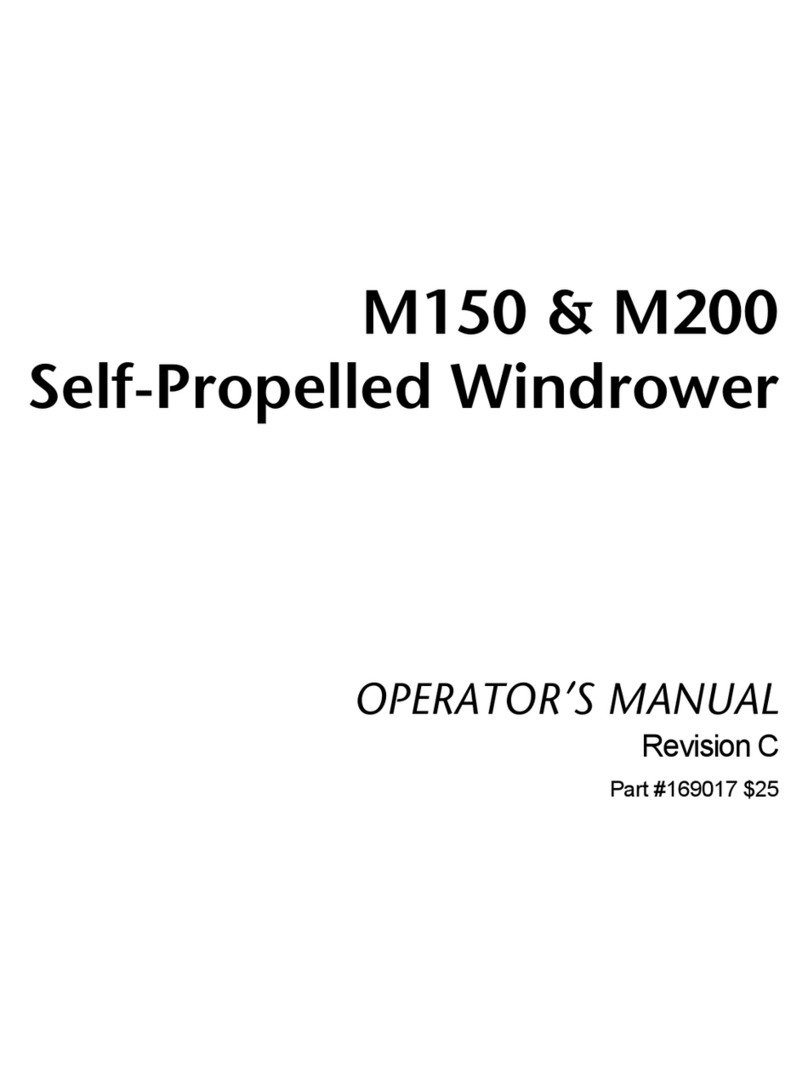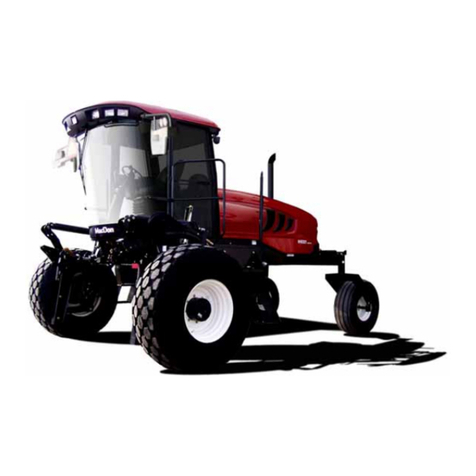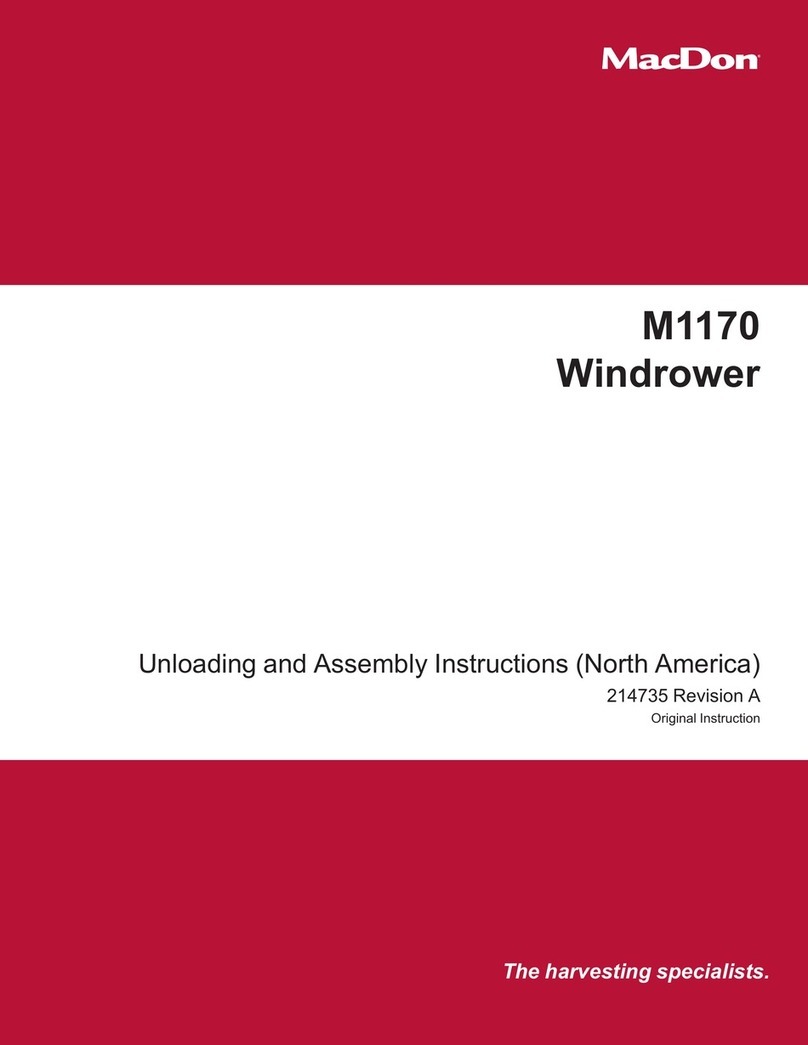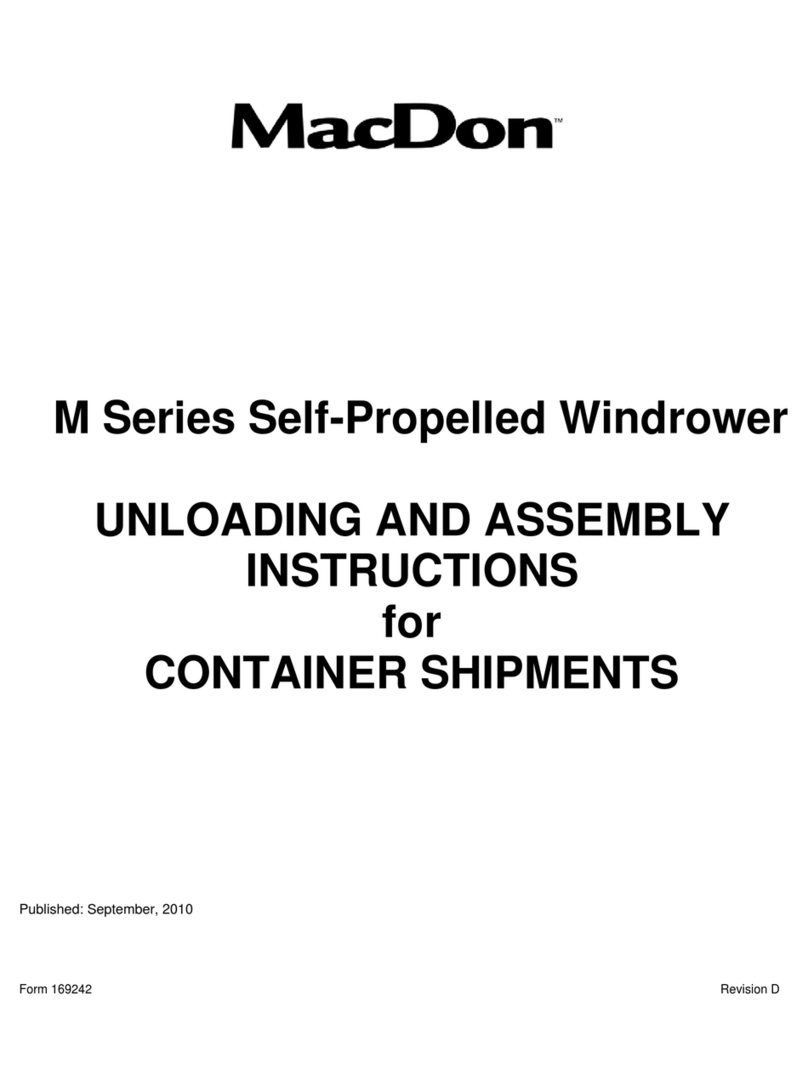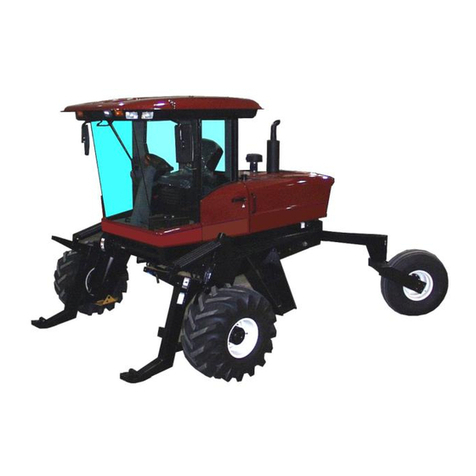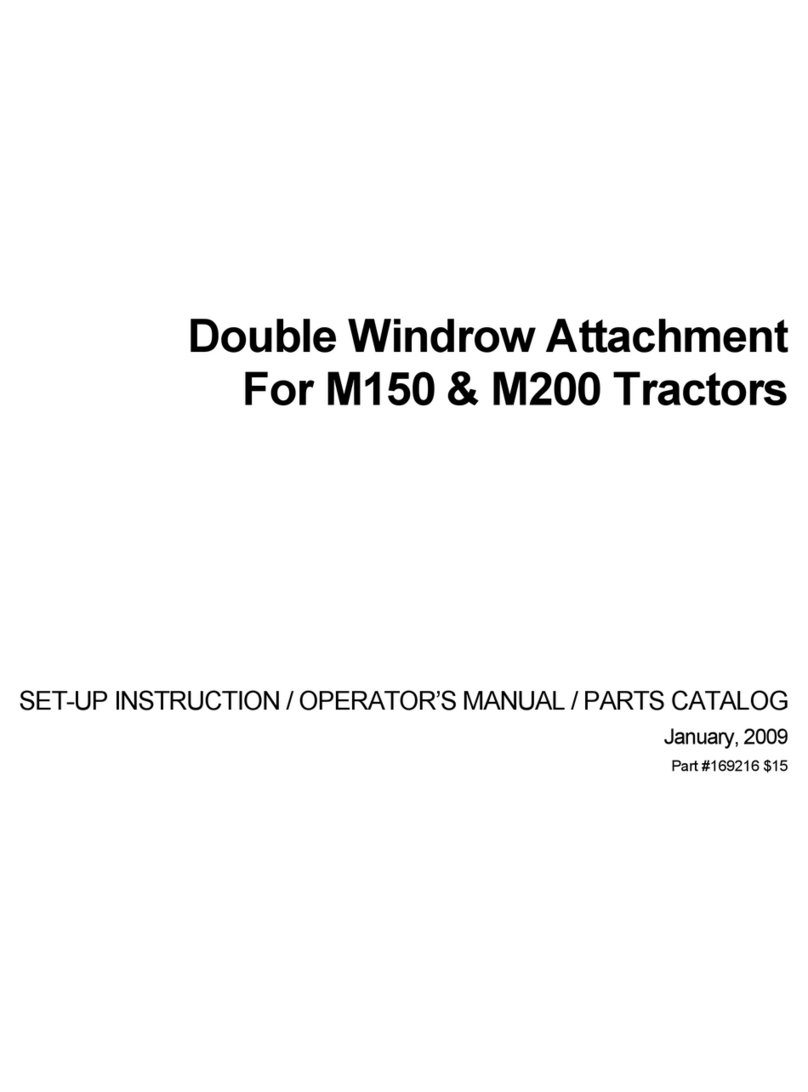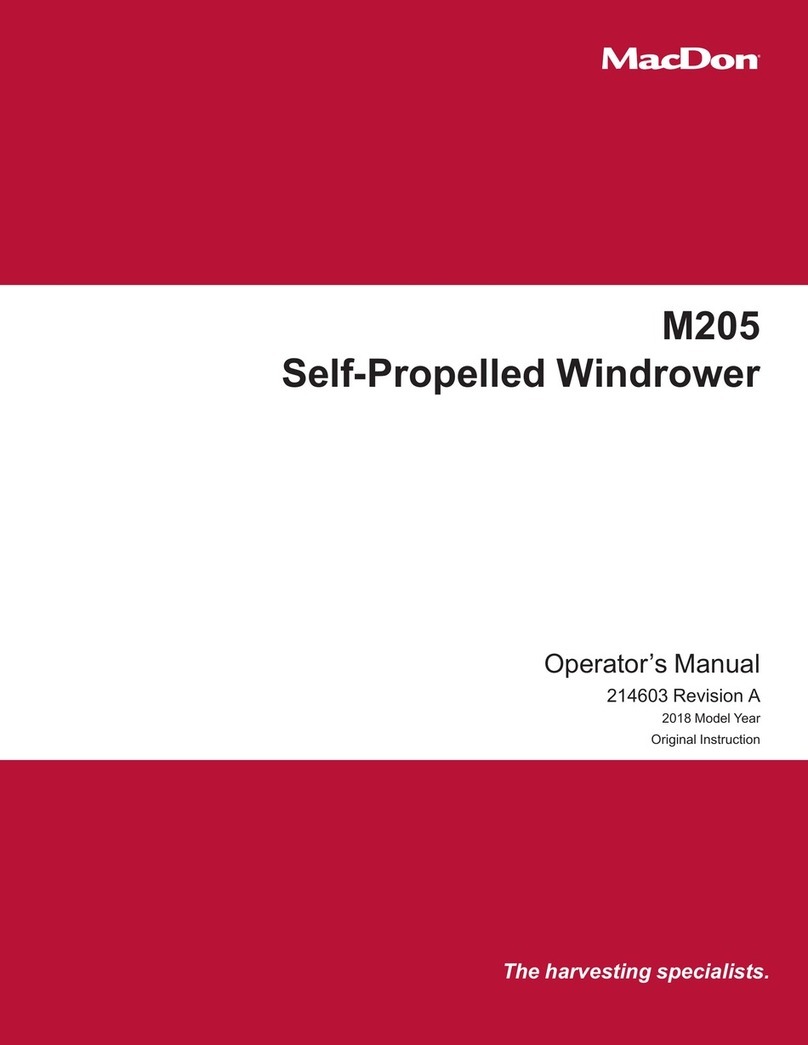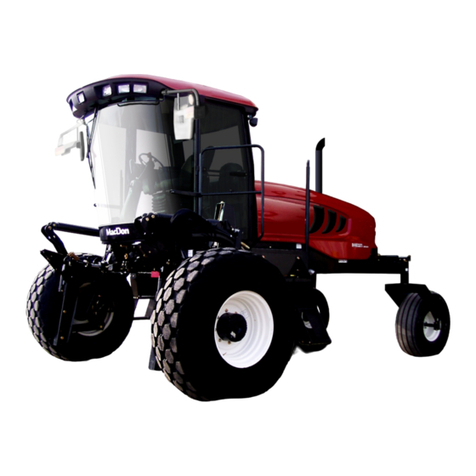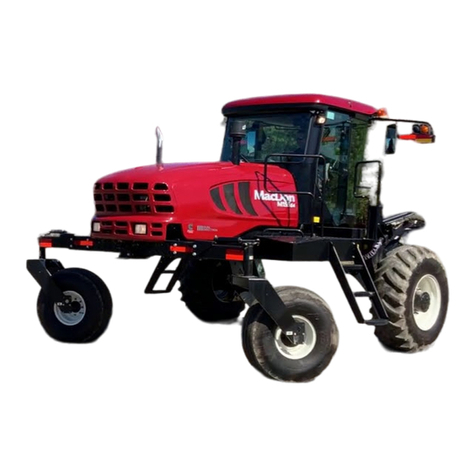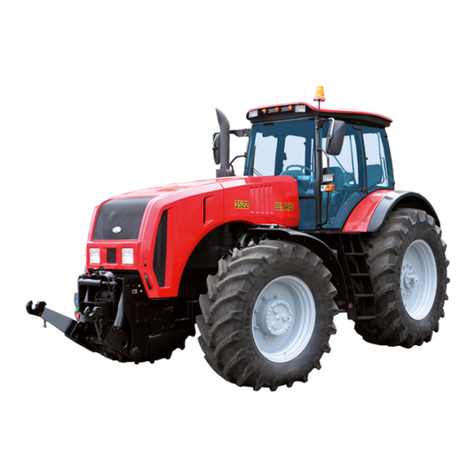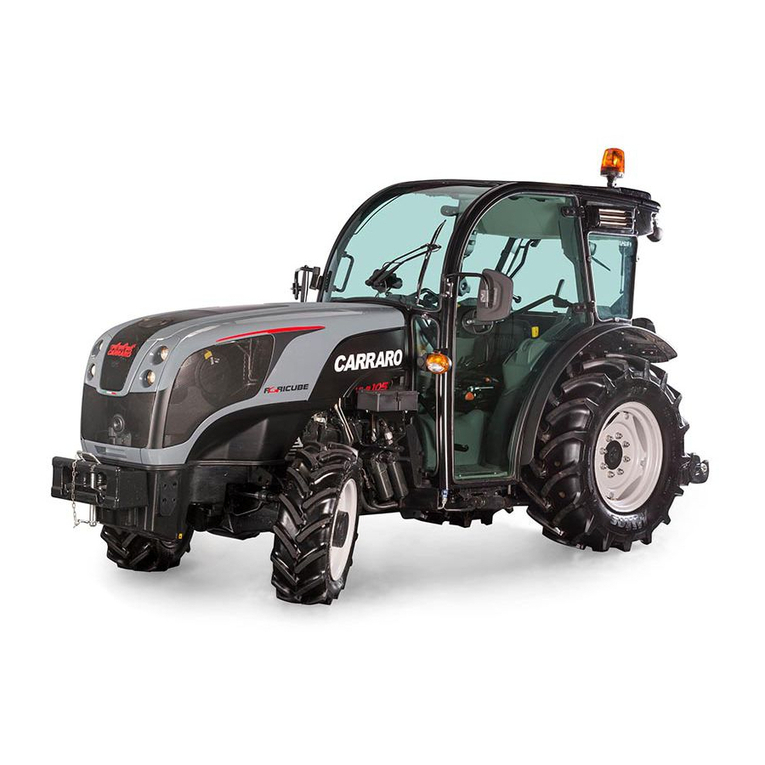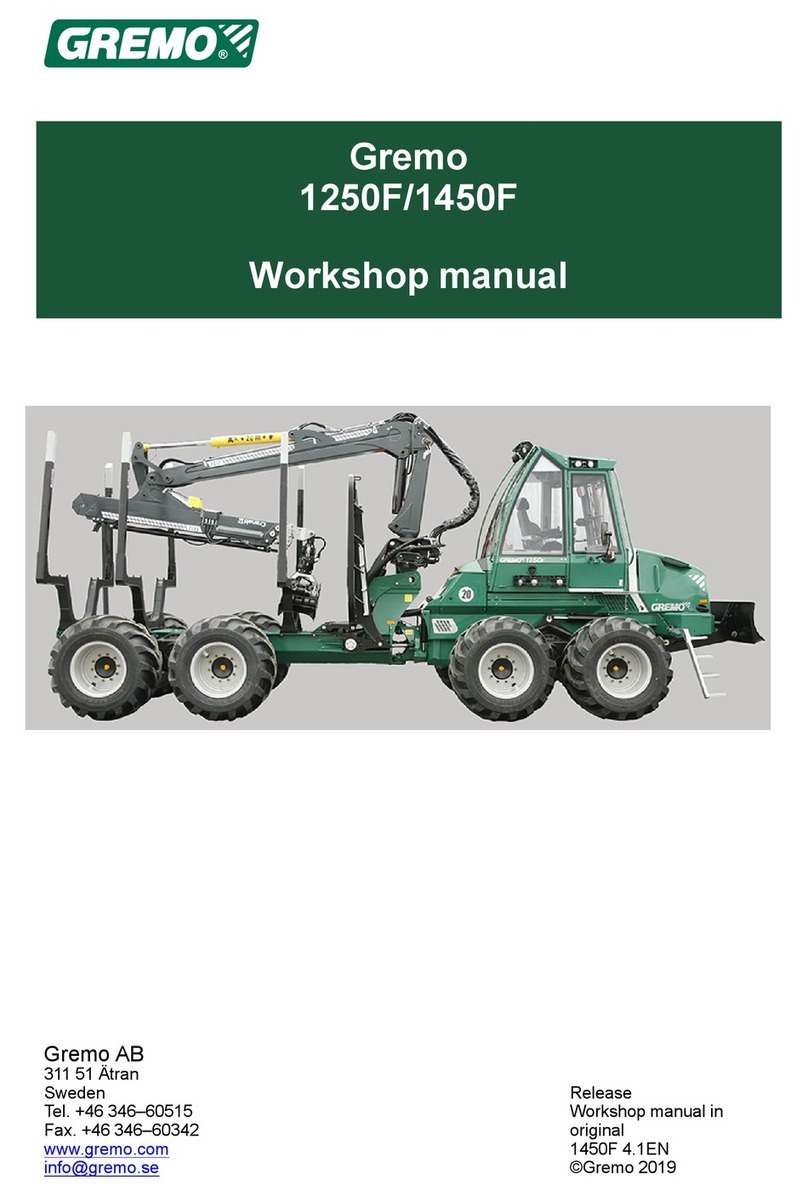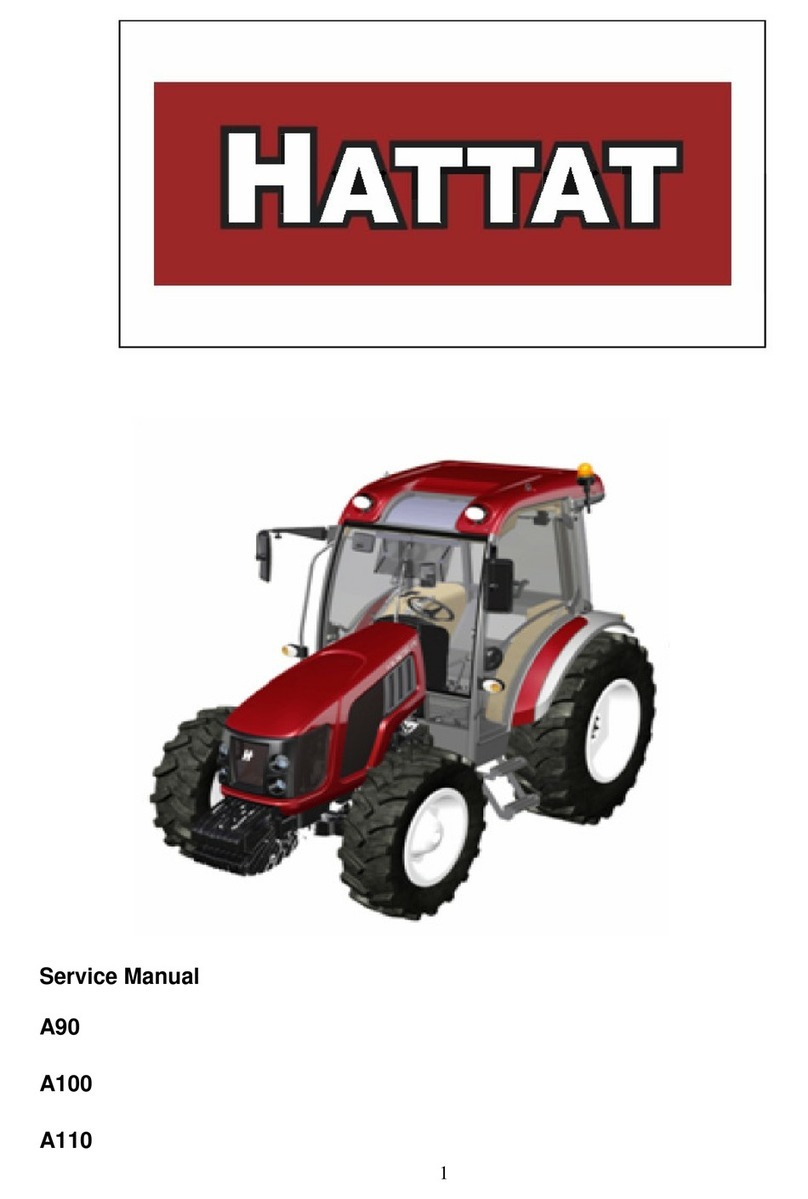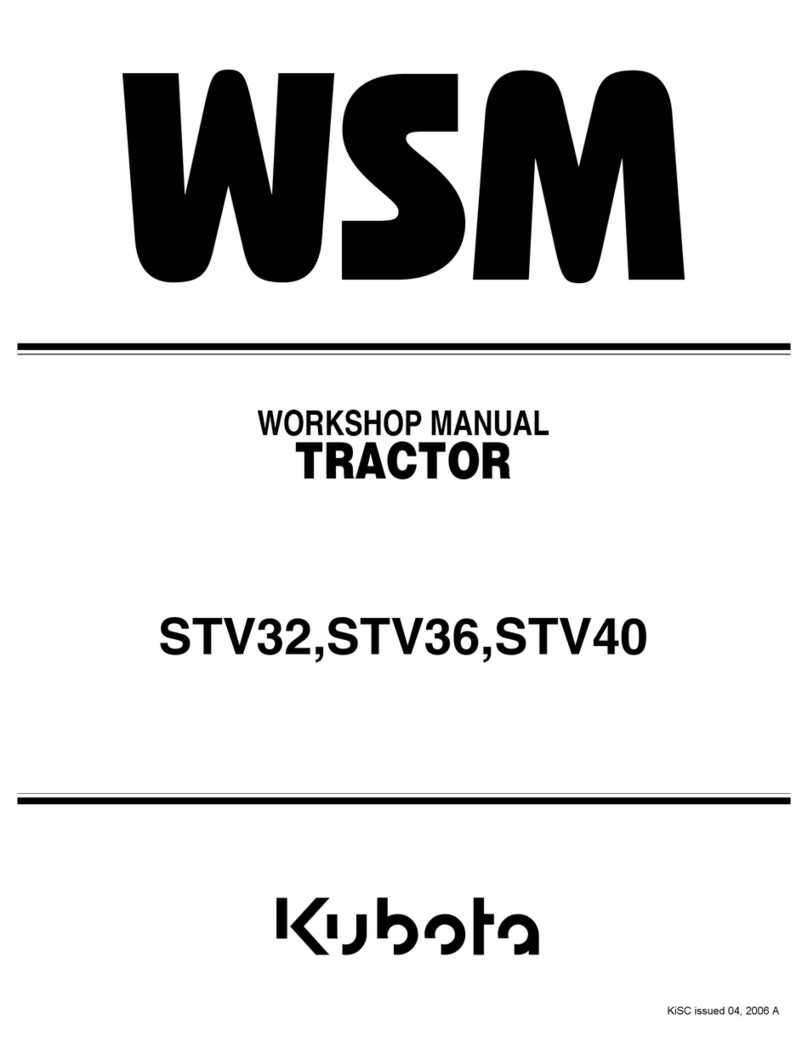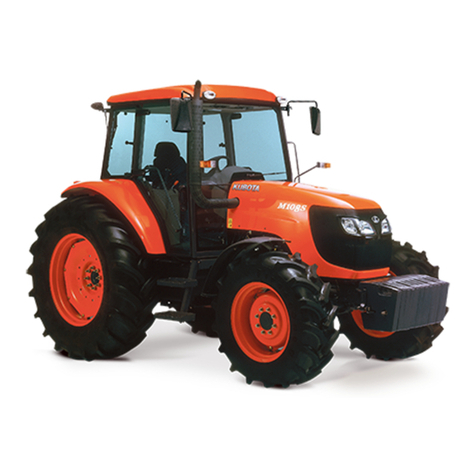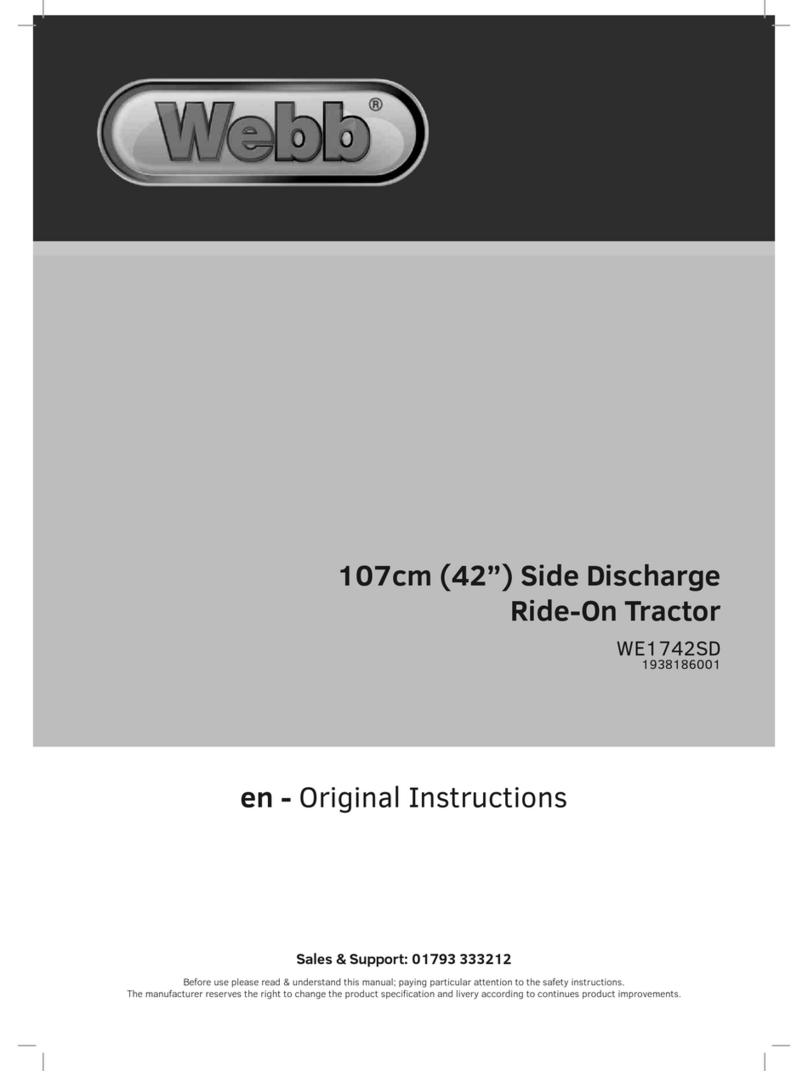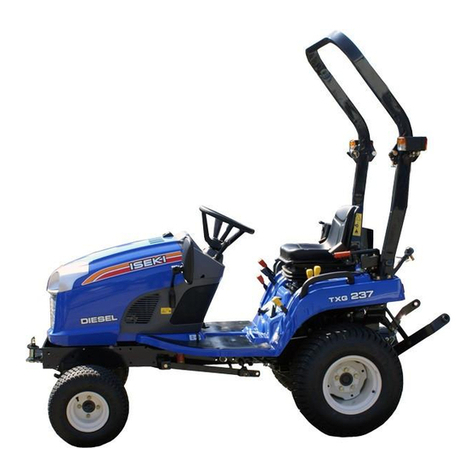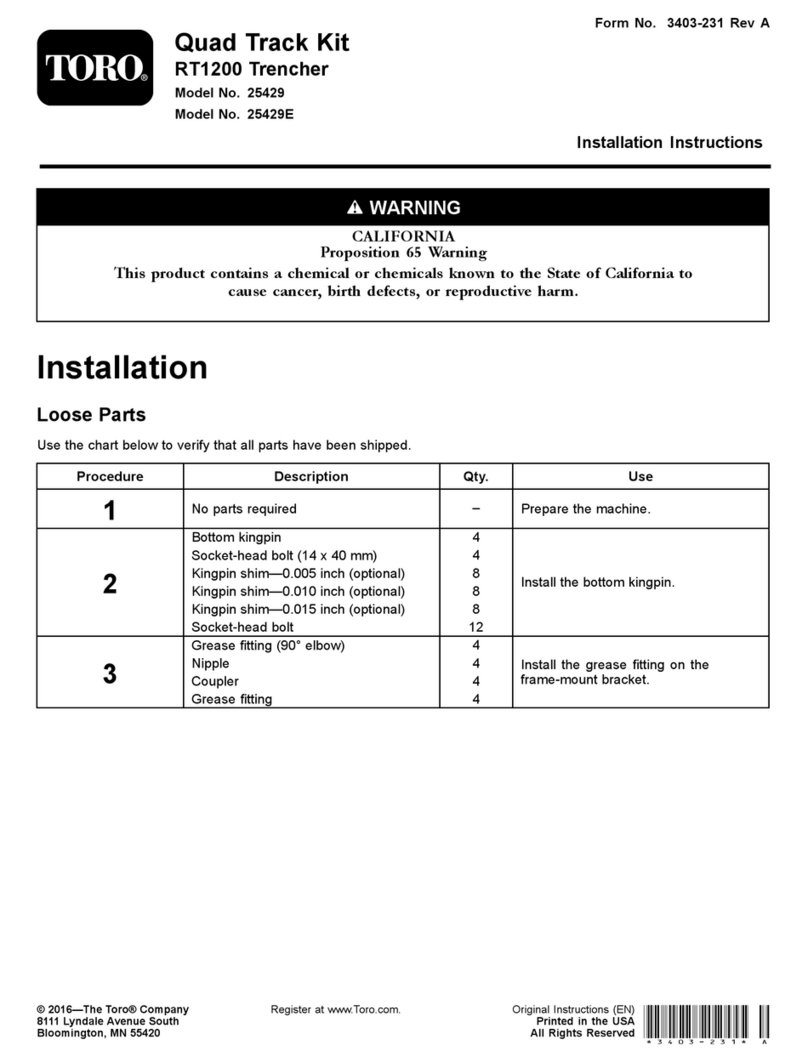
HU
Mi, [1]
Ezennel kijelentjük, hogy a következőtermék:
Név és modell: [3]
Szériaszám(ok): [4]
előírásait: 2006/42/EK.
Az alábbi harmonizált szabványok kerültek
alkalmazásra a 7(2) cikkely szerint:
EN ISO 4254-1:2013
EN ISO 4254-7:2009
Azon személy kiléte és aláírása, aki jogosult a
nyilatkozat elkészítésére: [6]
a
műszaki dokumentáció összeállítására:
Benedikt von Riedesel
Vezérigazgató, MacDon Europe GmbH
Hagenauer Straße 59
65203 Wiesbaden (Németország)
LT
Mes, [1]
Pareiškiame, kad šis produktas:
Pavadinimas ir modelis: [3]
Serijos numeris (-iai): [4]
2006/42/EB.
straipsnyje 7(2):
EN ISO 4254-1:2013
EN ISO 4254-7:2009
Deklaracijos vieta ir data: [5]
Asmens tapatybės duomenys ir parašas asmens,
įgalioto
Vardas ir pavardėasmens, kuris įgaliotas
techninįfailą:
Benedikt von Riedesel
Generalinis direktorius, MacDon Europe GmbH
Hagenauer Straße 59
bvonriedesel@macdon.com
LV
Mēs, [1]
Deklarējam, ka produkts:
Nosaukums un modelis: [3]
Sērijas numurs(-i): [4]
2006/42/EK
prasībām.
7. panta 2. punktā:
EN ISO 4254-1:2013
EN ISO 4254-7:2009
Tās personas vārds, uzvārds un paraksts, kas ir
pilnvarota sagatavot šo deklarāciju: [6]
Tās personas vārds, uzvārds un adrese, kas ir
pilnvarota sastādīt tehnisko dokumentāciju:
Benedikts fon Rīdīzels
Ģenerāldirektors, MacDon Europe GmbH
Hagenauer Straße 59
65203 Wiesbaden (Vācija)
NL
Wij, [1]
Verklaren dat het product:
Machinetype: [2]
Naam en model: [3]
Serienummer(s): [4]
voldoet aan alle relevante bepalingen van de
Richtlijn 2006/42/EC.
Geharmoniseerde normen toegepast, zoals vermeld
7(2):
EN ISO 4254-1:2013
EN ISO 4254-7:2009
Plaats en datum van verklaring: [5]
Naam en handtekening van de bevoegde persoon om
de verklaring op te stellen: [6]
Naam en adres van de geautoriseerde persoon om
het technisch dossier samen te stellen:
Benedikt von Riedesel
Algemeen directeur, MacDon Europe GmbH
Hagenauer Straße 59
65203 Wiesbaden (Duitsland)
PO
My niżej podpisani, [1]
Oświadczamy, że produkt:
Typ urządzenia: [2]
Nazwa i model: [3]
Numer seryjny/numery seryjne: [4]
spełnia wszystkie odpowiednie przepisy dyrektywy
2006/42/WE.
Zastosowaliśmy następujące (zharmonizowane)
normy zgodnie z artykułem 7(2):
EN ISO 4254-1:2013
EN ISO 4254-7:2009
Data i miejsce oświadczenia: [5]
Imięi nazwisko oraz podpis osoby upoważnionej do
przygotowania deklaracji: [6]
Imięi nazwisko oraz adres osoby upoważnionej do
przygotowania dokumentacji technicznej:
Benedikt von Riedesel
Dyrektor generalny, MacDon Europe GmbH
Hagenauer Straße 59
65203 Wiesbaden (Niemcy)
RO
Noi, [1]
Declarăm, căurmătorul produs:
Tipul mașinii: [2]
Denumirea și modelul: [3]
Număr (numere) serie: [4]
corespunde tuturor dispozițiilor esențiale ale
2006/42/EC.
Au fost aplicate următoarele standarde armonizate
7(2):
EN ISO 4254-1:2013
EN ISO 4254-7:2009
Data și locul declarației: [5]
pentru întocmirea declarației: [6]
Numele și semnătura persoanei autorizate pentru
întocmirea cărții tehnice:
Benedikt von Riedesel
Manager General, MacDon Europe GmbH
Hagenauer Straße 59
65203 Wiesbaden (Germania)
SV
Vi, [1]
Maskintyp: [2]
Namn och modell: [3]
Serienummer: [4]
2006/42/EG.
Harmonierade standarder används, såsom anges i
7(2):
EN ISO 4254-1:2013
EN ISO 4254-7:2009
Plats och datum för intyget: [5]
Benedikt von Riedesel
Hagenauer Straße 59
65203 Wiesbaden (Tyskland)
bvonriedesel@macdon.com
SL
Mi, [1]
izjavljamo, da izdelek:
Vrsta stroja: [2]
Ime in model: [3]
Serijska/-e številka/-e: [4]
2006/42/ES.
Uporabljeni usklajeni standardi, kot je navedeno v
členu 7(2):
EN ISO 4254-1:2013
EN ISO 4254-7:2009
Kraj in datum izjave: [5]
Istovetnost in podpis osebe, opolnomočene za
pripravo izjave: [6]
Ime in naslov osebe, pooblaščene za pripravo
tehnične datoteke:
Benedikt von Riedesel
Generalni direktor, MacDon Europe GmbH
Hagenauer Straße 59
65203 Wiesbaden (Nemčija)
bvonriedesel@macdon.com
SK
My, [1]
týmto prehlasujeme, že tento výrobok:
Typ zariadenia: [2]
Názov a model: [3]
Výrobné číslo: [4]
spĺňa príslušné ustanovenia a základné požiadavky
smernice č. 2006/42/ES.
Použité harmonizované normy, ktoré sa uvádzajú v
Článku č. 7(2):
EN ISO 4254-1:2013
EN ISO 4254-7:2009
Miesto a dátum prehlásenia: [5]
Meno a podpis osoby oprávnenej vypracovaťtoto
prehlásenie: [6]
Meno a adresa osoby oprávnenej zostaviťtechnický
súbor:
Benedikt von Riedesel
Generálny riaditeľMacDon Europe GmbH
Hagenauer Straße 59
65203 Wiesbaden (Nemecko)
bvonriedesel@macdon.com
IT
Noi, [1]
Tipo di macchina: [2]
Nome e modello: [3]
Numero(i) di serie: [4]
2006/42/CE.
7(2):
EN ISO 4254-1:2013
EN ISO 4254-7:2009
Luogo e data della dichiarazione: [5]
Nome e firma della persona autorizzata a redigere la
dichiarazione: [6]
Nome e persona autorizzata a compilare il file
tecnico:
Benedikt von Riedesel
General Manager, MacDon Europe GmbH
Hagenauer Straße 59
65203 Wiesbaden (Germania)
PT
Nós, [1]
Declaramos, que o produto:
Tipo de máquina: [2]
Nome e Modelo: [3]
Número(s) de Série: [4]
2006/42/CE.
Normas harmonizadas aplicadas, conforme referido
7(2):
EN ISO 4254-1:2013
EN ISO 4254-7:2009
Local e data da declaração: [5]
elaborar a declaração: [6]
Nome e endereço da pessoa autorizada a compilar o
ficheiro técnico:
Benedikt von Riedesel
Gerente Geral, MacDon Europa Ltda.
Hagenauer Straße 59
65203 Wiesbaden (Alemanha)
bvonriedesel@macdon.com
SR
Mi, [1]
Izjavljujemo da proizvod
Tip mašine: [2]
Naziv i model: [3]
Serijski broj(evi): [4]
2006/42/EC.
Korišæeni su usklaðeni standardi kao što je navedeno
u èlanu 7(2):
EN ISO 4254-1:2013
EN ISO 4254-7:2009
Datum i mesto izdavanja deklaracije: [5]
sastavljanje
deklaracije: [6]
Ime i adresa osobe ovlašæene za sastavljanje teh-
nièke datoteke:
Benedikt von Riedesel
Generalni direktor, MacDon Europe GmbH
Hagenauer Straße 59
65203 Wiesbaden (Nemačka)
bvonriedesel@macdon.com
262177 iii Revision A
